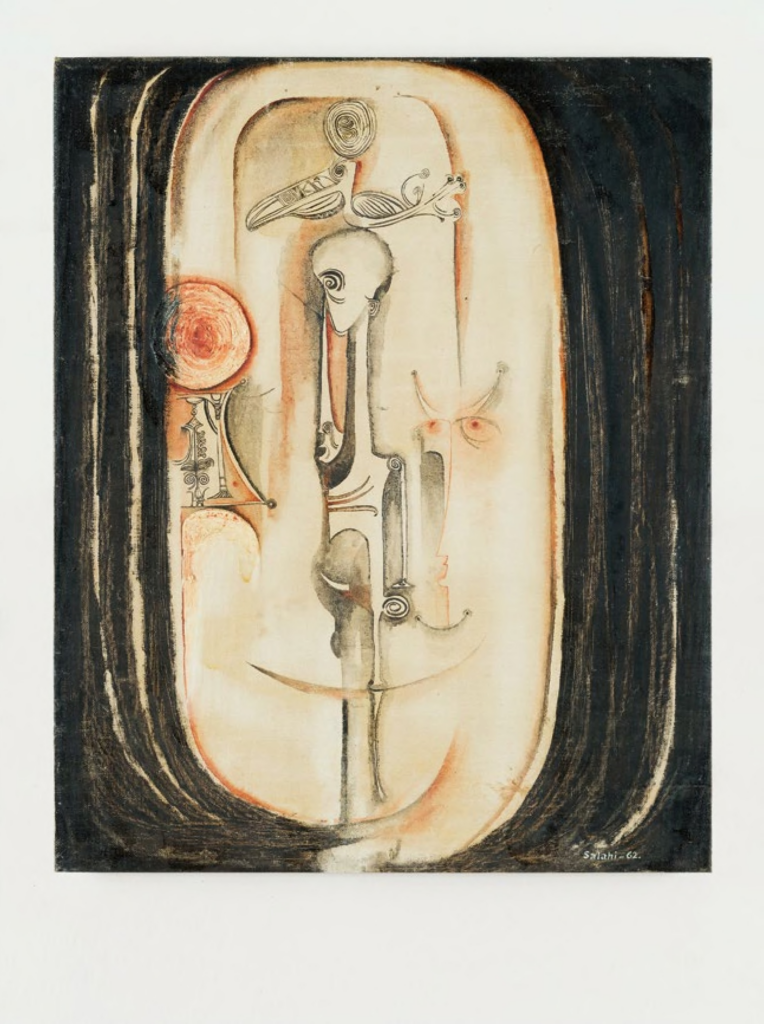IBRAHIM EL-SALAHI
Born 1930 in Omdurmán, Sudan, lives and works in Oxford, United Kingdom
Dry Month of the Fast 1962, Untitled 1962, Fatima 1968

Ibrahim El-Salahi works with motifs from African, Arab, and Islamic art to create paintings and drawings that interrogate and invert common notions of Sudanese identity using a modernist vocabulary. Trained as a painter at London’s Slade School of Fine Art during the mid-1950s, El-Salahi returned to teach at the College of Fine and Applied Arts in Khartoum in 1957. He was one of the initiators of the pioneering art movement known as the Khartoum School, which abstracted Indigenous, Islamic, and calligraphic forms to develop a visual language and identity reflecting postcolonial independence. In 1961, on a trip to Nigeria, he met the writers Chinua Achebe and Wole Soyinka, and forged stronger ties with the pan-African modernist movement he too was a part of. El-Salahi served Sudan as a cultural diplomat in the early seventies, first in London then in Khartoum, where he was imprisoned in 1975–76 on accusations of his involvement in plotting a coup. In prison he continued to secretly draw studies for paintings on miniscule pieces of paper, which he concealed in the sand. The experience informed his subsequent artistic practice in Qatar, where he lived after his release, and later in the UK, where he moved in 1998. He was honored with a retrospective at Tate Modern in London in 2013.
The paintings Dry Month of the Fast and Untitled (both 1962) demonstrate El-Salahi’s inventiveness. The muted tones of his palette borrow from the dry desert hues of Sudan, accentuated with the suggestion of familiar shapes—figures, body parts, heads of birds—yet obscured again through their mutations into background, outline, and shadow. African motifs are evident in both works, with elongated figures reflecting traditional wood carvings and animal figurines. Despite their soft tones, the paintings evoke power, energy, and the supernatural, expressing both reflection and change. El-Salahi’s formal commitment to the drawn line radiates in both works. Fatima (1968) builds on this visual language with organic and geometric shapes placed in formal composition and textural contrast, lending movement and dimensionality to the work. Grounded in Indigenous symbolism and motifs, the painting’s abstract and mask-like shapes morph into the surreal. This represents El-Salahi’s transnational legacy as a pioneer of a visual language that repositioned African art in the global canon of modernism.
